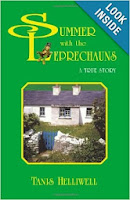 |
| Don preparing to carry Taos drum up a cliff in a bedspreadd. |
Don Sandner was a training analyst in our Institute for years. He also worked with a Navaho medicine man for 16 summers, resulting in his book Navaho Symbols of Healing (Hartcourt Brace, 1979; Healing Arts Press, 1991). He initiated a conference that met over several years studying the overlap of analytical psychology and shamanism, documented in a collection of papers that he co-edited with Steven H. Wong, The Sacred Heritage: The Influence of Shamanism on Analytical Psychology (Routledge Press, 1997).
My candidate group entered training at the C. G. Jung Institute of San Francisco in 1989, a time our Institute was in severe crisis for various reasons. We candidates really took the brunt of it. Training committees were dysfunctional, and there was general bedlam. Many of us began to wonder what were we doing there.
In the second year candidates participate in a case conference with a selected analyst, and my group chose Don Sandner. At the end of the year we asked him to take us to the Southwest and he agreed.
 |
| On the way to the cliff. |
The structure of the trip was this: During the day we would visit various archeological sites, including attending the annual Corn Dance at the Santa Domingo Pueblo. We would not just visit these sites, we would sit for an hour or so in various ancient kivas, or drum in a ruin. Once we carried Don's Taos drum to the top of a cliff to a ruin of a pueblo to drum in the glaring midday sun.
In the evening he would show us slides of sand paintings, and then we would drum for an hour or so.
He did not charge us a cent for the trip. He arrived early to the motel where we candidates were staying and spent all day with us, driving us all around the country, and then around 11 pm he drove the hour back to where he was staying in Sante Fe. He taught the whole time. We had many questions. His words formed the cells of my professional body. He said:
1. You have to have a discipline to deal with spiritual energy. It matters less what the discipline is than that you practice it regularly.
2. When you have been healed in a deep way, you have to pass it on.
3. Make a sacred circle each morning. If everything relates to the center, we do not have to impose ethics from without. You will not be doing harmful things.
4. He was very much into holding the opposites, talking things through. He felt we need the other way of viewing things.
Really, the experience of being with him on this trip initiated the true learning of my candidacy. It formed the cells of my professional body. It was a kind of spiritual transmission: his teaching, his generosity, his love of the work. It was as if he formed a sand painting of wholeness there in the ethers of the Southwest, sat us in the middle of it for ten days, and through applying the experience, returned us to a balance. This was the experience that I thought the candidacy would be, and because of these ten days, it was.
There were others who gave untiringly to our training. In the next blog I will describe
the candidates' last meeting with Jo and Jane Wheelwright, also the founders.
